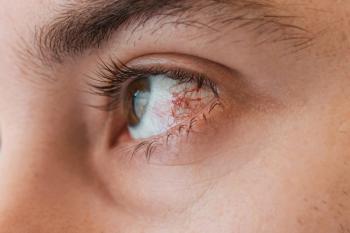
Why humans are making epidemics worse
Nearly every year there seems to be some new epidemic that crops up, creating healthcare crises and worldwide panic. Robert Kalayjian, MD, director of infectious diseases at MetroHealth Medical Center in Cleveland, says these epidemics are becoming more common, and he explained the implications for public health during a session at SECO 2016.
Atlanta-Nearly every year there seems to be some new epidemic that crops up, creating healthcare crises and worldwide panic. Robert Kalayjian, MD, director of infectious diseases at MetroHealth Medical Center in Cleveland, says these epidemics are becoming more common, and he explained the implications for public health during a session at SECO 2016.
Dr. Kalayjian says the way humans interact with the environment allows for emerging and reemerging infectious diseases such as Ebola and Zika to play out in similar patterns time and time again.
Related:
How our environmental impact affects disease
Of the 18 Ebola outbreaks in equatorial Africa since 1975, most occurred in remote areas where extensive transmission from person to person was unlikely, says Dr. Kalayjian. The epidemics were relatively small and quickly contained. In total, fewer than 2,000 people were infected in those epidemics, and 1,296 people died.
The latest outbreak, however, occurred in densely populated cities in which the virus spread like wildfire. For comparison, the
“The first important principle I’d like to emphasize is that in all cases, we know that these epidemics occurred by interactions with infected animals-bats or primates-and it speaks to environmental degradation and human encroachment into the habitats of these animals that has allowed this to occur,” says Dr. Kalayjian.
About 60 percent of human infectious diseases are somehow related to wild and domestic animals, he says. Rabies, for example, is passed from a rabid animal to a human, but it is unlikely to be passed to other humans from there. Ebola is passed to humans through some interaction with either great apes or fruit bats, but then it is able to be transmitted from person to person.
Another factor that makes these epidemics hard to contain is the increasing ease with which humans travel. The most recent Ebola epidemic spread very easily among Guinea, Sierre Leone, and Liberia in part because of the very porous borders among the countries, says Dr. Kalayjian.
“Importantly, the epidemic could be tracked traveling along the transportation routes between very populous cities,” he says.
Climate change-not just increasing temperatures, but also changes in precipitation-is also affecting the spread of infectious diseases.
“Lyme, anaplasma, babesiosis, and ehrlichia are all transmitted by tick vectors,” says Dr. Kalayjain. “Climate change is playing a role in the population of those ticks and their ability to thrive in warm environments.”
As such, Dr. Kalayjian says that a “One Health” approach is required to prevent and contain future outbreaks of infectious diseases. This approach requires collaboration among human, animal, and environmental health entities on disease surveillance, outbreak response, and prevention to achieve an optimal human health outcome. The
Ebola
While the most recent Ebola crisis in West Africa was declared over by the
Ophthalmology Times:
Ebola is a hemorrhagic fever and is caused by a filovirus (RNA), similar to West Nile Virus. Dr. Kalayjian says symptoms include fever, gastrointestinal problems such as diarrhea, nausea, and vomiting, dehydration, sepsis, and disseminated coagulation. The mortality rate has varied greatly, but about 40 percent of those infected died during the most recent epidemic.
The virus has an animal reservoir and is found in great apes and fruit bats. Human-to-human transmission occurs through direct contact with the bodily fluids from an infected patient currently exhibiting symptoms, which is why it was common during the most recent outbreak to see healthcare providers in West Africa in head-to-toe protective gear.
“Prevention involves extraordinary body-contact precautions,” says Dr. Kalayjian. “This level of protection is unprecedented and was previously required only in research settings with high concentrations of various pathogens.”
Why should eyecare providers still care about Ebola? Dr. Kalayjian says there are very important ocular complications that occur with Ebola.
“One of the interesting complications from Ebola has to do with the immunology of the eye,” he says. “The eye is a site of immune privilege. The ocular complications appear in people who have survived the initial infection, and these complications generally occur months later-probably because the initial infection within the eye did not provoke an immune response and consequently will present much later.”
Ocular symptoms include chorioretinal scars, anterior/posterior uveitis, and vitritis.
Related:
Dr. Kalayjian says there have been rapid and promising developments in the creation of an Ebola vaccine, with several vaccines in development.
“I can’t emphasize enough how important vaccines are in curtailing epidemics but also in preserving human health,” he says.
Zika
Zika virus is the infectious disease epidemic of the moment. The mosquito-borne disease can present as fever, lymphadenopathy, and conjunctivitis.
Overall, Dr. Kalayjian says Zika is a much more mild disease than dengue or chikungunya, which are both spread by the same mosquitos. However, the main concern with Zika is that babies whose mothers contracted the disease while pregnant were born with microcephaly. The
Although a number of Americans were infected after traveling outside of the U.S., no cases to date have originated in the mainland U.S. Local mosquito-borne cases have been reported in the Commonwealth of Puerto Rico, the US Virgin Islands, and America Samoa. Due to Zika’s rapid spread throughout Latin America and the disease’s ocular symptoms, Rachel Grant, OD, shared her advice for diagnosing Zika in your practice. Read her advice
Newsletter
Want more insights like this? Subscribe to Optometry Times and get clinical pearls and practice tips delivered straight to your inbox.



















































.png)


